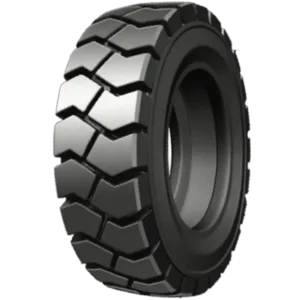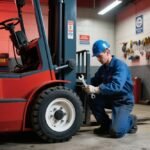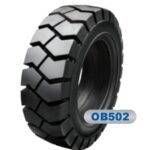Introduction
Solid tires are essential for industrial vehicles, forklifts, and heavy machinery. Unlike pneumatic tires, they resist punctures but vary widely in quality. Here’s how to identify Solid Tire Quality.
1. Material Composition
- Rubber Quality: Look for high-grade natural/synthetic rubber blends. Cheap tires use excessive fillers, reducing elasticity.
- Reinforcement: Fiberglass or steel belts enhance durability. Avoid tires with visible air bubbles or uneven textures.
2. Load Capacity & PSI Rating
- Check the manufacturer’s load index (e.g., 2,000 lbs per tire). Exceeding limits causes premature wear.
- Optimal PSI: Solid tires don’t require inflation, but hardness (measured in Shore A) should match usage (e.g., 60A for indoor floors, 75A for rough terrain).
3. Wear Resistance & Tread Design
- Tread Pattern: Deep, multidirectional treads improve grip. Smooth tires suit indoor use only.
- Abrasion Tests: Ask for ISO 4649 or DIN 53516 test results; lower wear rates (<100 mm³) indicate longevity.
4. Heat Dissipation
Poor heat resistance leads to “tire frying.”:
- Have vented hubs or heat-resistant compounds.
- Avoid excessive heat buildup during prolonged use (test via infrared thermometers).
5. Brand Reputation & Certifications
- Trusted brands: Michelin, Continental, or specialized manufacturers like Solideal.
- Certifications: ISO 9001, DOT, or ECE R117 ensure compliance.
Related Product
-
 6.00-9/4.00 tyres OB502 Pattern Solid Forklift Tyres by Advance Brand
6.00-9/4.00 tyres OB502 Pattern Solid Forklift Tyres by Advance Brand -
 Advance Brand High Quality Solid Tires 18×7-8/4.33 with OB502 Pattern ForkLift Tire
Advance Brand High Quality Solid Tires 18×7-8/4.33 with OB502 Pattern ForkLift Tire -
 High Quality Advance Solid Tires 5.00-8/3.00 with OB502 Pattern for Diesel ForkLift
High Quality Advance Solid Tires 5.00-8/3.00 with OB502 Pattern for Diesel ForkLift -
 Advance Solid Tires 4.00-8/3.00 with OB502 Pattern for Diesel ForkLift
Advance Solid Tires 4.00-8/3.00 with OB502 Pattern for Diesel ForkLift




